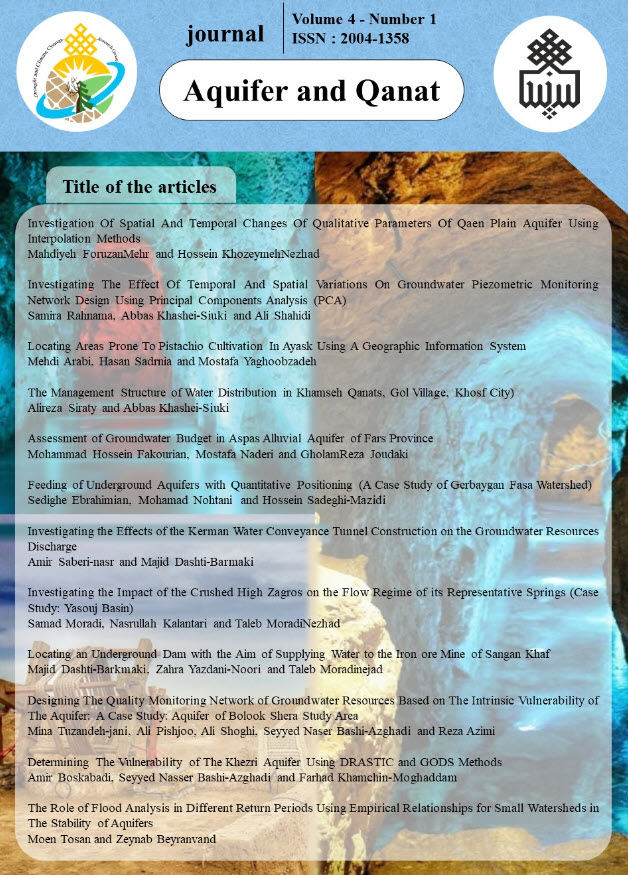Document Type : Original Article
Authors
1 Sari Agricultural Sciences and Natural Resources University
2 Department of Mechanics of Biosystem Engineering, Sari Agricultural Sciences and Natural Resources University
3 Water Engineering Department, Zabol University, Zabol
Abstract
The sustainability of subsurface drainage systems is highly dependent on the sustainability of drainage water receiving ecosystems. In this study, using the concept of life cycle assessment, the effectiveness of different subsurface drainage systems was investigated. Required field data were prepared during two canola growing seasons from a field with three types of conventional subsurface drainage system consisting of 0.9 m depth and 30 m spacing (D0.9L30), 0.65 m depth and 30 m spacing (D0.65L30) and a depth of 0.65 m and a spacing of 15 m (D0.65L15) and a bilevel subsurface drainage system consisting of four drain lines at a spacing of 15 m and with depths of 0.65 and 0.9 m as alternate (Bilevel). Also, a plot without subsurface drain pipe was selected as a Control. After rice harvest, canola was cultivated in the area. During the study period, the consumption of inputs and their losses along with other management and agricultural operations were recorded. The environmental impact analysis of the cropping system was performed using SIMAPRO 9.0 software. Among the input sources, direct emission from the field, urea fertilizer and the use of agricultural machinery had the largest contribution in the environmental impact of canola cropping, respectively. Investigation of the final effects showed that the Bilevel drainage system had a better performance than the Control treatment and other subsurface drainage treatments, so that it reduced the environmental effects by 17.4% compared to Control.
Keywords
Main Subjects

